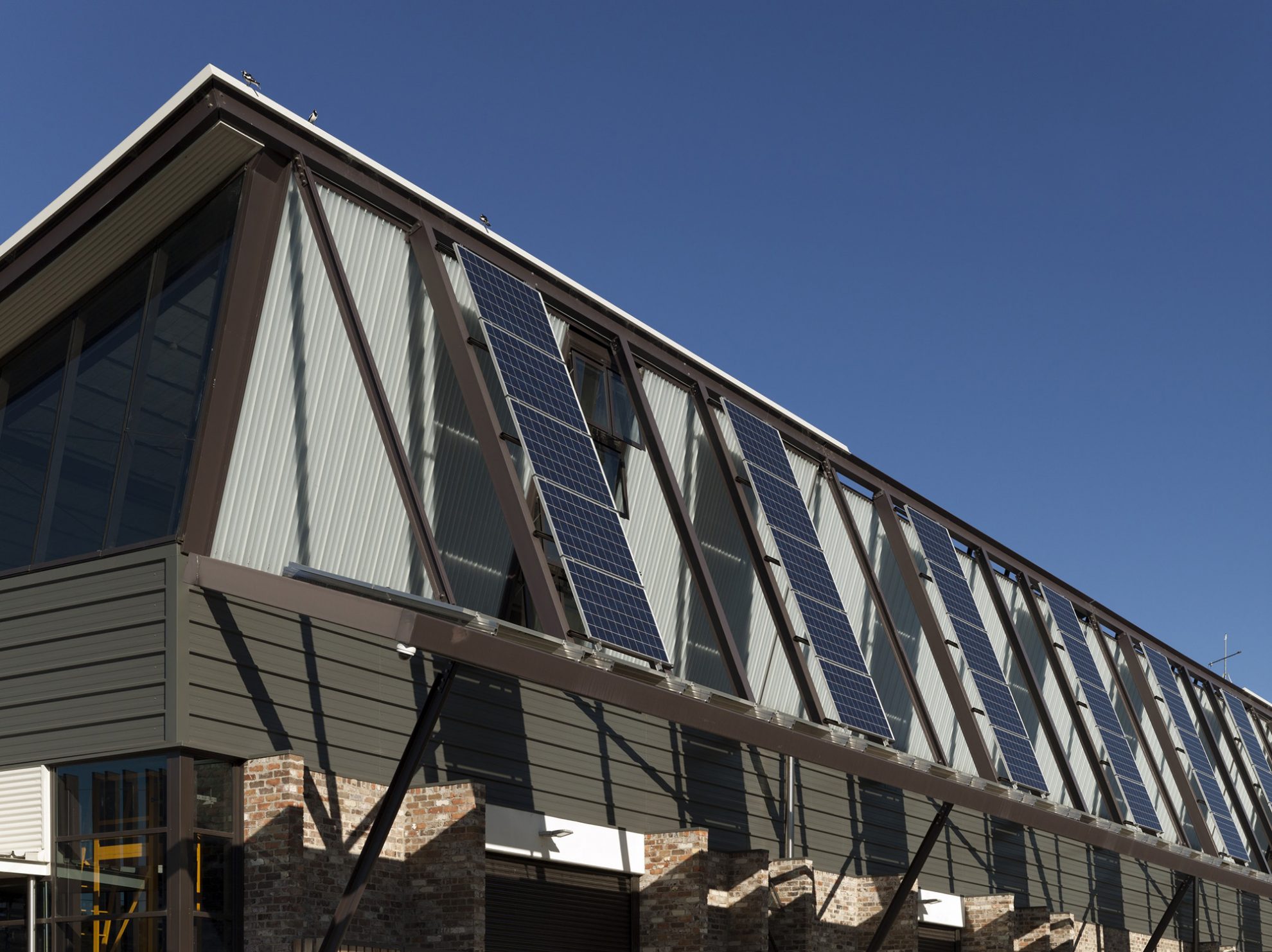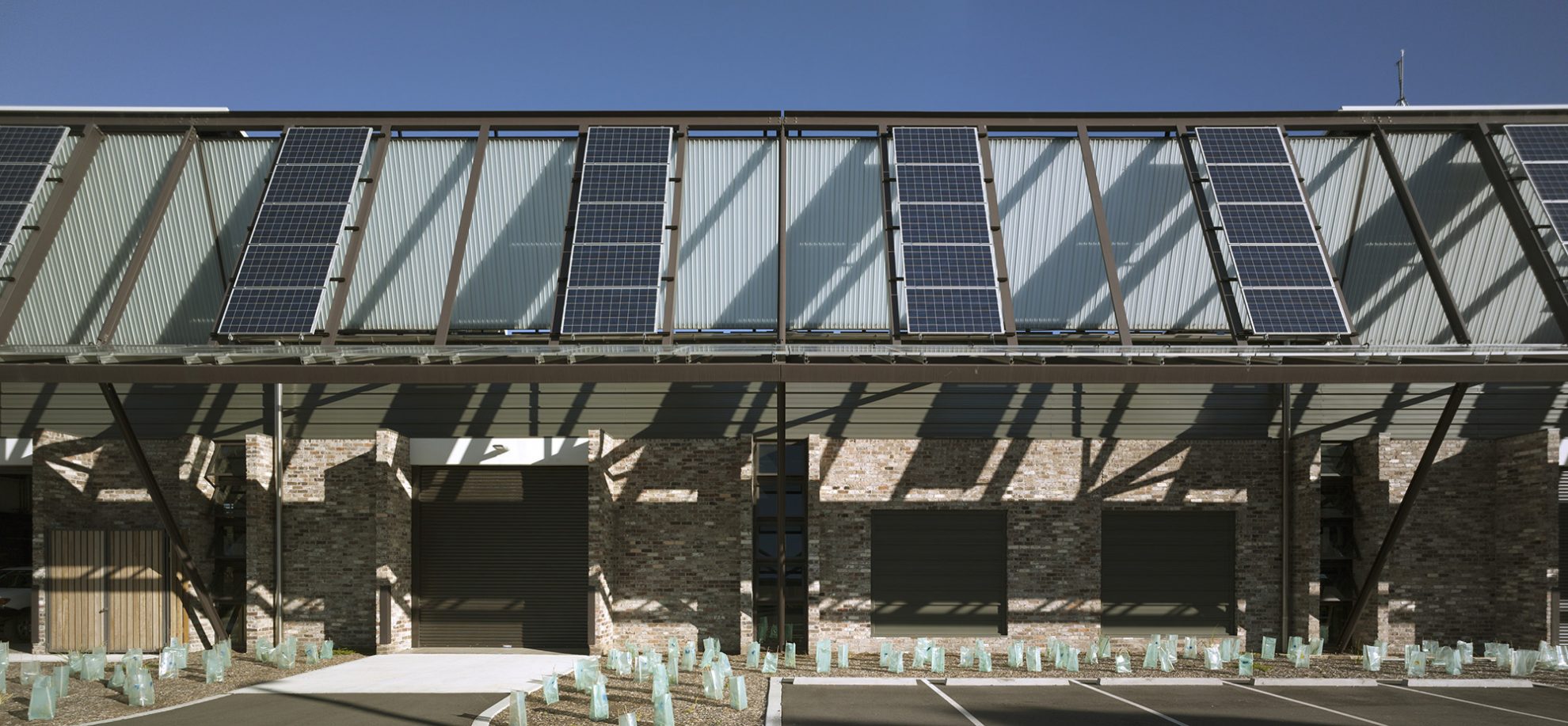Sustainable Buildings Research Centre the First Building in Australia to Achieve International Living Building Challenge Compliance

In 2013, Professor Paul Cooper, Director of the Sustainable Buildings Research Centre (SBRC) spoke of how the SBRC “set out to achieve several sustainability and Australian building-firsts, including certification under the world’s most rigorous sustainability program – the Living Building Challenge.”
And on the 21st of November 2019, six years after the building’s completion, we achieved it. The SBRC is the first building in Australia to achieve International Living Building Challenge compliance.
The SBRC is a building that lives by its work. Won through a design competition to house Wollongong University’s built environment sustainability research unit, the building’s primary purpose is to deliver evidence-based research into sustainability for Australia’s built-environment.


Design Director Joe Agius
Designed to prototype and research a range of sustainable building technologies, the fabric of the building itself is a site for integrated research. The SBRC is water, energy and carbon neutral, socially responsible, equitable, nontoxic and healthy. All the while remaining beautiful, inspiring and educational.
So, what is the International Living Building Challenge? And why did we want it?
The Living Building Challenge is “the world’s most rigorous standard for green buildings. Living Buildings strive for net-zero or net-positive energy, are free of toxic chemicals, and lower their energy footprint many times below a generic commercial building.”
The design team used the Living Building Challenge as its sustainability framework to ensure the building design lived up to the research its occupants undertake. To this end Paul required the building aim stretch the boundaries of what was possible at the time of its design.
SBRC Director, Senior Professor Paul Cooper
From day one, I said to the design team that we wanted to create a building that went way beyond the current benchmark for sustainable buildings. We believe society as a whole needs to do much better than that.
The Living Building Challenge informed every aspect of this project, from material selections through to the SBRC design group using public transport for all travel to and from team meetings (85km each way).
The Living Building Challenge is organised into seven performance areas called Petals. Each Petal is further sub-divided into Imperatives, which address specific issues through detailed requirements.
“The beauty petal generated a whole discursive interaction with Paul and his team that is somewhat lacking in the architect-client relationship – conversations around aesthetics and beauty are reasserted as important and fundamental considerations,” said Design Director Joe Agius.
“The equity petal helps contextualise a project around the bigger issues of place, community, access, and public benefit – how does a building contribute beyond the client’s needs and requirements? What is the broader restorative potential of the project?”
“The most difficult petal by far was the materials petal. To properly interrogate the materials composition of every element within the building to the level of detail required by the LBC was incredibly demanding. It sharpened decision-making on materials selection in terms of those locally-made, distance of manufacture from the site, and the generally inadequacy of information across the materials supply chain of what is in building products.”
The SBRC is a haven for research and industry collaborations with the goal to make all buildings sustainable. The SBRC building itself is a demonstration of the value of the research the SBRC team carries out. It also has 6-Star Green Star certification and the building includes 468 solar panels to support net zero energy, an onsite rainwater system to enable net zero water performance, and use of environmentally safe and reused building materials.


Situated at the Innovation Campus, the centre’s Exhibition Foyer is open to the public during work hours.
“It is hoped people will explore the building and gardens and be inspired to design their homes using similar principles,” Professor Cooper said.
For more information go to the following links: Sustainable Buildings Research Centre (SBRC) http://sbrc.uow.edu.au; International Living Future Institute http://www.living-future.org; and the Living Future Institute of Australia https://living-future.org.au/.